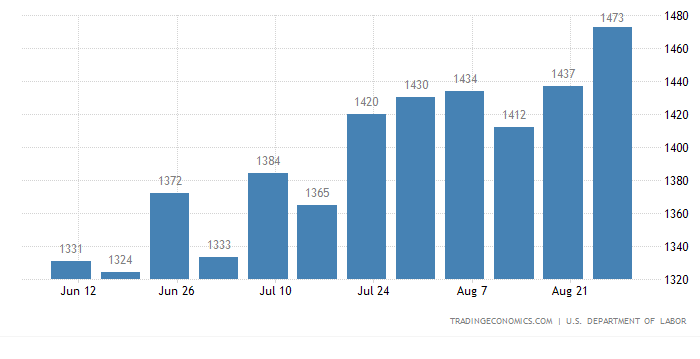Why does the labor market seem detached from the monthly jobs report, courtesy of the Bureau of Labor Statistics?
Everything is showing weakness and slower growth, from the number of corporate layoffs to business sentiment.
Case in point, the continuing jobless claims.
While the number of Americans filing for first-time unemployment benefits declined to 222,000 in the week ending September 3, continuing jobless claims surged to 1.473 million. This is higher than the market forecast of 1.435 million.
This labor metric has been trending higher since June.
Of course, as Liberty Nation recently reported:
“In the non-farm payrolls (NFP) report, the Establishment Survey will count multiple jobholders for each position. So, if you have two jobs, this will count for two jobs for the overall report. However, the Household Survey will only factor in every jobholder. So, if you possess two positions, it will only count as one job in this part of the NFP.
What did this metric reveal? The Joe Biden economy lost jobs in two of the last four months.
Meanwhile, this part of the BLS numbers exposed other trends in the job market. First, 1.9 million people reported they could not work because their employer closed or lost business during the COVID-19 pandemic. Second, the number of people not in the labor force but wanting a job stood at 5.5 million. Third, the number of Americans employed part-time but would prefer full-time employment held steady at 4.1 million.”
The September jobs report next month should be telling if this labor market is still hot or doused by the Federal Reserve’s quantitating tightening initiative.

Leave a Comment